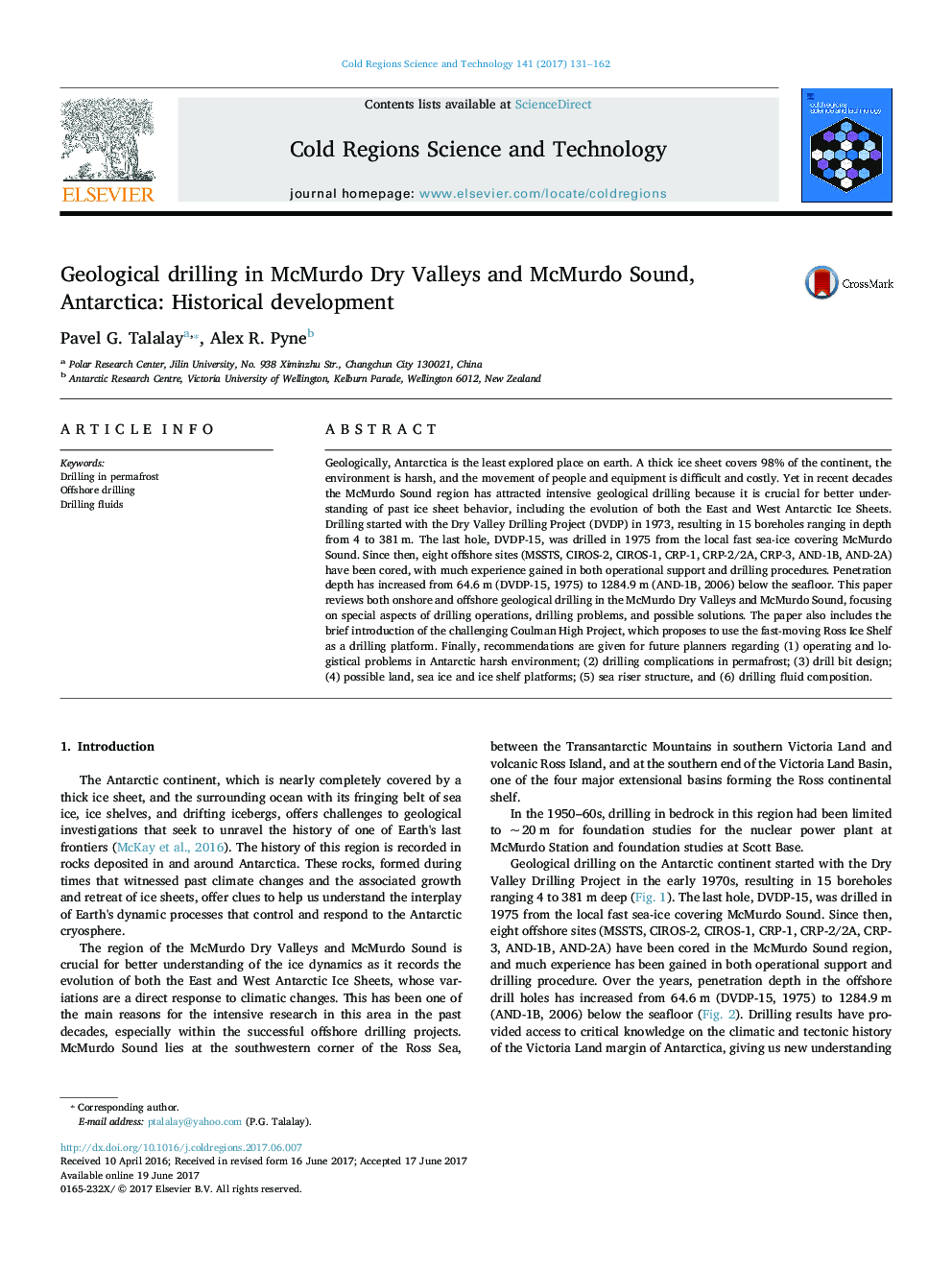| Article ID | Journal | Published Year | Pages | File Type |
|---|---|---|---|---|
| 5779364 | Cold Regions Science and Technology | 2017 | 32 Pages |
â¢The development of geological drilling technology in the McMurdo region over the last 46 years is comprehensively reviewed.â¢Over the years, penetration depth in the McMurdo Sound region has increased from 64.6 m to 1284.9 m below the seafloor.â¢Detailed recommendations are given for planning and designing future geological drilling projects in Antarctica.
Geologically, Antarctica is the least explored place on earth. A thick ice sheet covers 98% of the continent, the environment is harsh, and the movement of people and equipment is difficult and costly. Yet in recent decades the McMurdo Sound region has attracted intensive geological drilling because it is crucial for better understanding of past ice sheet behavior, including the evolution of both the East and West Antarctic Ice Sheets. Drilling started with the Dry Valley Drilling Project (DVDP) in 1973, resulting in 15 boreholes ranging in depth from 4 to 381Â m. The last hole, DVDP-15, was drilled in 1975 from the local fast sea-ice covering McMurdo Sound. Since then, eight offshore sites (MSSTS, CIROS-2, CIROS-1, CRP-1, CRP-2/2A, CRP-3, AND-1B, AND-2A) have been cored, with much experience gained in both operational support and drilling procedures. Penetration depth has increased from 64.6Â m (DVDP-15, 1975) to 1284.9Â m (AND-1B, 2006) below the seafloor. This paper reviews both onshore and offshore geological drilling in the McMurdo Dry Valleys and McMurdo Sound, focusing on special aspects of drilling operations, drilling problems, and possible solutions. The paper also includes the brief introduction of the challenging Coulman High Project, which proposes to use the fast-moving Ross Ice Shelf as a drilling platform. Finally, recommendations are given for future planners regarding (1) operating and logistical problems in Antarctic harsh environment; (2) drilling complications in permafrost; (3) drill bit design; (4) possible land, sea ice and ice shelf platforms; (5) sea riser structure, and (6) drilling fluid composition.
